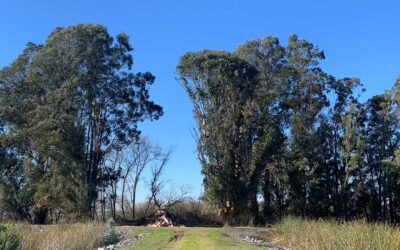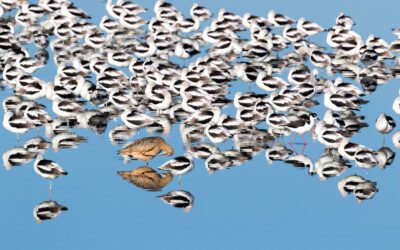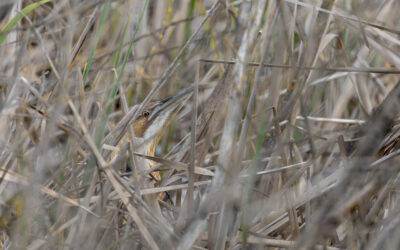From Peter Colasanti:
Welcome to May, the breedingest month in the Petaluma wetlands. By May Day the early birds start hatching eggs while the late migrants are all freshly arrived and easy to find as they sing from high throne perches and assault intruders to their domains.
Waterfowl are mostly notable by their absence. There are Canada Geese, Mallards and Mute Swans to boss them around, and a few skulky Gadwall and Cinnamon Teal keeping out of sight. Small numbers of stragglers and non-breeding birds may be found, we once had a Red-breasted Merganser show up in May. Herons mostly stay close, expect Great Egrets and Great Blue Herons which both breed at the oxidation ponds. Green Herons breed southward along the SMART Train tracks and feed at least as far up river as the turning basin, be alert for fly-by birds. A few Northern Harriers breed locally too, keeping the voles on their toes.
Spotted Sandpiper is locally uncommon but a findable late migrant in May, especially along the river. Watch for its distinctive low and shallow wingbeats in flight. Red-necked Phalarope occurs irregularly, we once had 73 of them on a mid-May survey. Laraphobes may want to start looking now as there’s mostly just Western, Ring-billed and California Gulls to see and so fewer possibilities to have to eliminate. Sadly, there have been fewer terns locally in recent years, with big Caspians, medium Forster’s and maybe you could be the first to find Least Tern in the wetlands. Gene Hunn has found them breeding in similar habitat not far east of here in recent years.
Though the water birds are diminished, there’s a lot of migrant passerines to fill that void and May’s best to seek them out. One non-passerine likeliest in May is White-throated Swift. These breed in Novato area overpass weep holes, occasionally in the Petaluma River 101 bridge too. They cover long distances to fill their crops with bugs for the babies and are often seen tearing up the skies above Shollenberger Park in May. Look quick. Also high in attitude is the Western Kingbird, which can be reliably found on the eucalyptus trees of Ellis Creek.
Most other migrant breeders are more or less tied to riparian growth, the older the better. Like a dry-surfaced wetland assemblage, riparian trees send down deep roots to shallow water tables to form a distinctive forest dominated by Valley Oaks, Cottonwood, assorted willows, Boxelder and more. Our best at present is that thin line bordering Ellis Creek. The Casa Grande Adobe Creek project is coming into its own, though it is still better for fall migrants than spring breeders. The willows along the entry trail at ShollPark and at the “kink” can turn up migrants. All these areas could host Yellow or Wilson’s Warbler. Listen for Black-headed Grosbeak singing like much improved Robins. Bullock’s Orioles are likely in Ellis Creek riparian and male Brown-headed Cowbirds might be seen and heard gurgling atop any tree and sometimes the parapets of local commercial buildings.
May is prime time for snake sightings too. Enjoy them, there are no poisonous species here, only garters, gophers and kings, all more colorful than the average bird.





0 Comments